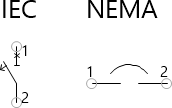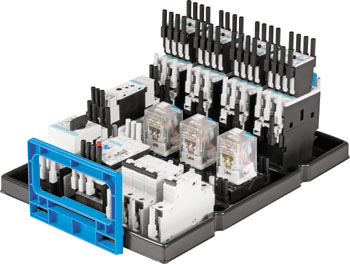Circuit breaker


Circuit breakers protect connected circuits from overloading. They’re equipped with a thermal trigger and an electromagnetic trigger. The thermal trigger is usually a bimetallic switch which is tripped after a specified period of time when current flowing through the circuit breaker is greater than nominal current. In the event of a short-circuit or excessive overcurrent, the electromagnetic trigger is tripped and the circuit break opens very quickly. The circuit breaker is equipped with trip-free release, which means that it opens even if it’s held closed manually.
The switch’s characteristic can be selected under the circuit breaker’s attributes. If characteristic B is selected, the electromagnetic trigger is tripped at an amperage of 3 times nominal current, or at 5 times nominal current if characteristic C is selected. For thermal triggering, a selected tripping point can be specified for a given overcurrent value.
The symbol for the circuit breaker shows the switch in its open state. The circuit breaker is closed automatically when simulation in FluidSIM is started, so that it doesn’t have to be closed manually for each simulation.
Adjustable parameters
| Designation | Range | Default value |
|---|---|---|
| Rated current | 0.1 ... 100 A | 4 |
| Tripping characteristic | B, C | B |
| Tripping temperature | 50 ... 150 °C | 80 |
| Designation | Range | Default value |
|---|---|---|
| Multiple of nominal current | 1.5 ... 10 | 2 |
| Tripping time | 0.1 ... 100 s | 30 |